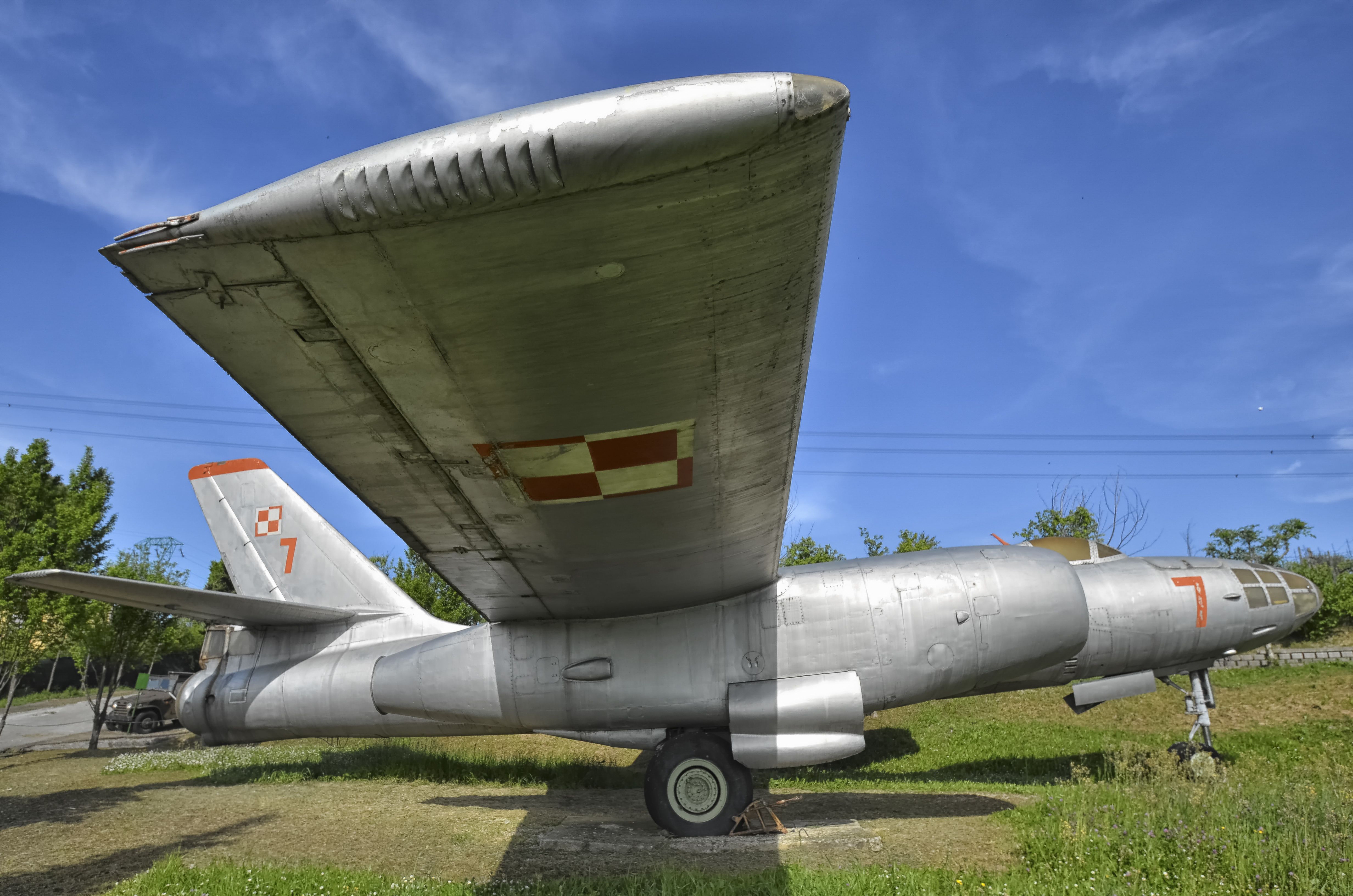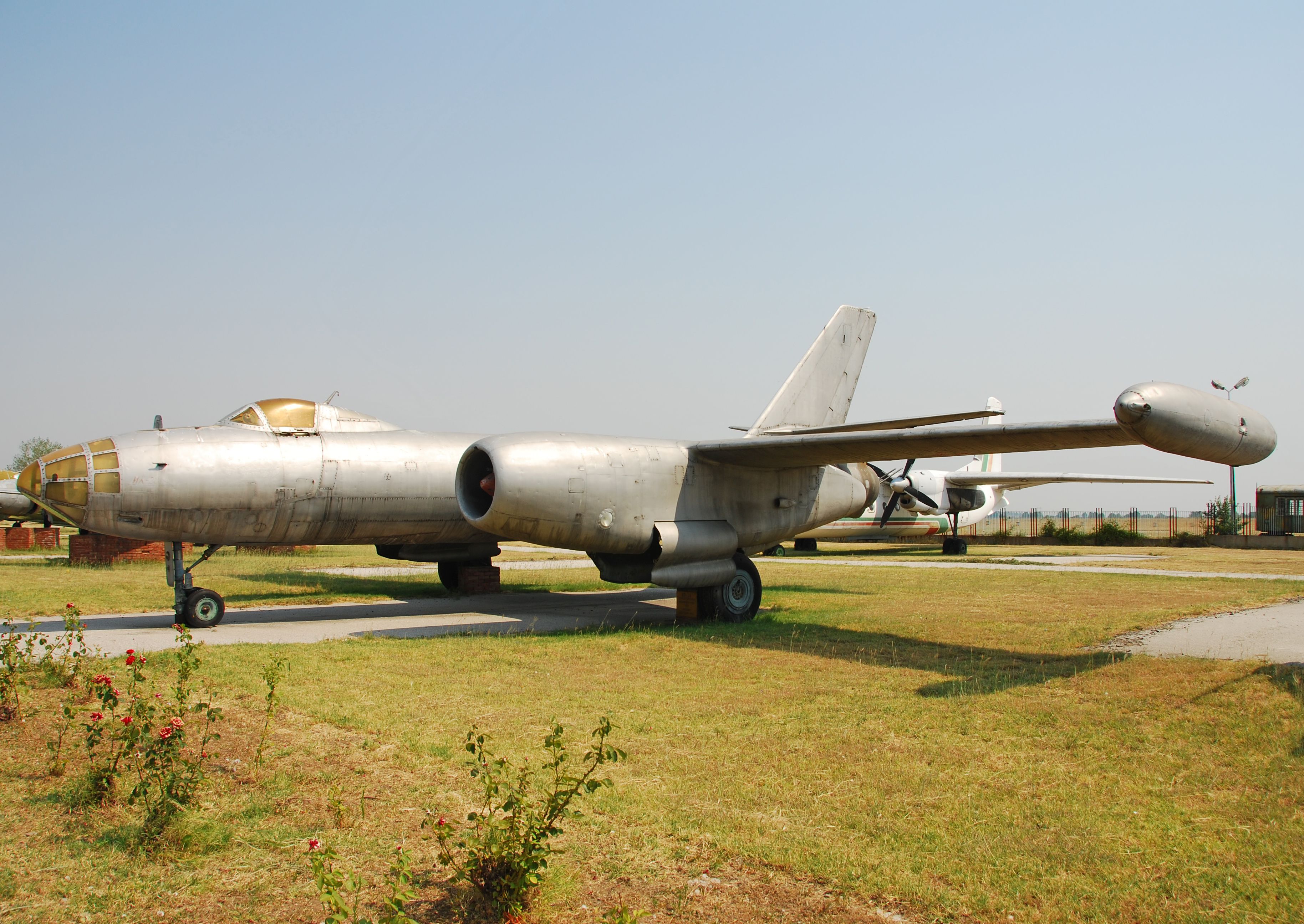The Ilyushin Il-28 is a jet bomber designed by the Soviet Union shortly after the end of World War II that is simple, robust, and easy to build and maintain.
Because of this versatility and ease of use, it was used by many "allied" Air Forces of the Soviet Union or Communist Bloc during the 1900s. Used for various purposes and built in several variants, the Ilyushin Il-28 has not yet seen the end of its career.
Early Soviet jet prototype
After the end of World War II, the two great victorious powers of the conflict, the Western Bloc (US and UK) and the Eastern Bloc (USSR), were determined to excel in dominating the skies.
As evidence of this, many German Messerschmitt Me 262 aircraft were quickly confiscated by the "Allies against Hitler" (i.e., the Soviets, British, and Americans), after the end of the world conflict to study their engines in particular. The Me 262 had impressed in 1942 as the first operational jet-powered fighter-bomber in history.
In fact, the Soviet Union had been studying the feasibility of jet engines since before World War II but still lagged behind the Western bloc. However, Soviet dictator Joseph Stalin was determined to close this gap by any means necessary, investing heavily in research and development and establishing small experimental design bureaus called OKBs (in Russian, Opytnoe Konstruktorskoe Bjuro).
These were charged with developing and creating prototypes in the field of advanced technology, mainly in the military field, which, once approved, were launched into mass production at Soviet state factories.
The three most promising aircraft OKBs selected in 1945 to work on the first generation of Soviet jet bombers were those of Andrei Tupolev, Sergei Ilyushin, and Pavel Sukhoi, founded in 1922, 1933, and 1939, respectively. The Tupolev and Ilyushin OKBs produced the Tu-12 and Il-22, respectively, while the Sukhoi OKB never got its design off the ground.
The British "help" and the turning point
Although Soviet engineers had extensively studied German Junkers and BMW jet engines, they realized early on that their prototypes were underpowered and had limited range.
In 1946, the Soviet Union, having no other solution, tried to buy British turbojet technology, convinced that the negotiations would fail. However, the British, also involved in a not-so-rosy period with the United States, agreed to do business with the Soviets, who, to their surprise, had the opportunity to purchase the Rolls-Royce Derwent and Nene turbojets.
This event was a turning point for the Soviet Union in the development of its jet engines. This engine went into production as the Klimov RD-45F and was soon improved and upgraded, resulting in the Klimov VK-1 engine.
In late 1947, an Ilyushin engineer proposed the development of a jet bomber called the "Il-28", using part of the design of the failed Il-22 and engines copied from the British. In 1948, the prototype Ilyushin Il-28 reached a speed of 518 mph (833 km/h), using improved Klimov VK-1 engines with a thrust of 5,950 lbf (26.5 kN).
After flight tests were completed, Tupolev's design was scrapped, and production of the Il-28 began in late 1949. Stalin ordered several aircraft to be ready for the Moscow May Day Parade in 1950, so 25 were hastily built and shown to the world for the first time, earning the nickname "Beagle" from NATO.
The variants
Crews that flew the Il-28 appreciated its good performance, maneuverability, reliability, and robustness. Suffice it to say that the VK-1 engines could easily swallow birds and branches. Several variants were built:
- Reconnaissance variant (Il-28R), equipped with a compartment that has a special mount for day or night cameras. It was later converted into a trainer.
- Torpedo bomber variant (Il-28T) at the request of the Soviet Navy. Later it was converted to an anti-submarine patrol configuration (Il-28PL).
- Nuclear weapons transport variant (Il-28N), with which the first nuclear weapon of fully Soviet design, the RDS-4 Tatiana, was transported in 1953. Later, two Il-28s were converted for fallout sampling to monitor nuclear tests.
- The mail and training transport variant (Il-28P) was sold to the state airline Aeroflot in 1954.
Love aviation history? Discover more of our stories here!
The Decline of the Soviet Union and the "Second Life" in Communist Countries
By the late 1950s, the Il-28 was mostly relegated to secondary service in the Soviet Union. Many Il-28s were scrapped in the early 1960s, even those with few flight hours, although some Il-28Rs remained in service in the Soviet Union until the 1980s.
The other half of the Il-28 production was intended for foreign use. Users included the following nations:
- In Asia: People's Republic of China, Afghanistan, Cambodia, North Korea, and North Vietnam.
- In Eastern Europe: Albania, Bulgaria, Czechoslovakia, East Germany, Hungary, Poland, and Romania.
- In the Middle East and Africa: Algeria, Egypt, Iraq, Morocco, Nigeria, Somalia, Syria, and Yemen.
- Cuba was the only operator in the "Western World."
The People's Republic of China was by far the largest user of the Il-28. The first deliveries began in 1952, and soon a fleet of several hundred Il-28s was reached. In the early 1960s, however, relations between the USSR and China deteriorated, and the Soviet Union stopped supplying spare parts. For this reason, a program was started at the factory in Harbin, China, to produce spare parts for Chinese Il-28s already in service and beyond.
In '64, the first Chinese Il-28 prototype, designated "H-5," was built and flown, and production began in 1965, although by then, it was an obsolete aircraft type. However, Chinese design and production capabilities were quite backward, and they had to settle for "copying" Soviet ones until the 1990s.
Today's Mission in the North Korean Air Force
The reasons why North Korea still uses Soviet Il-28 bombers today are both historical and technological. Almost all of North Korea's air force has historically come from two countries, Russia and China. It is estimated that a total of 88 examples of the Chinese "copy," the Harbin H-5, have been delivered and assigned to two North Korean regiments.
According to Flightglobal's WAF, there are 80 examples in service as of December 2022, making it the world's oldest jet bomber still in active military service. For these very reasons, North Korea has never had a truly national military aircraft development program but has always relied on procurement from its allies.
In addition, they provide North Korea with a bomber capable of striking South Korea and western Japan with conventional bombs, a useful complement to expensive and scarce long-range missiles.
The Il-28, the only tactical bomber in service in North Korea, was used by the North Korean 24th Air Regiment against industrial centers and the Korean population at the beginning of the Korean War.
Although the Il-28 was an excellent aircraft for the time it was designed, the Tupolev bombers that were not initially selected soon overshadowed it, and most of them were scrapped, although the aircraft was still helpful. It lived a second life in communist countries and has not yet finished its historic career.
Do you think that the long career of the Il-28 is dictated only by the backwardness of some countries? Let us know in the comments.
Source: Air Vectors, Mark Felton Productions, Slash Gear






